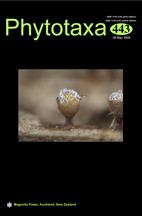Abstract
Embryological data provides insights into the taxonomy and evolution of angiosperms. Vochysiaceae is a mostly Neotropical family whose phylogenetic position was greatly influenced by reconstructions based on molecular data, and despite its monosymmetric and oligostemonous flowers, was included as a sister group of polysymmetric and polystemonous Myrtaceae. However, molecular data has yet to resolve the relationships between the genera inside the family. We analysed the early embryology of some species of five out of the six generally accepted Neotropical genera using sequential histological analyses to compare the microsporogenesis and gametogenesis and megasporogenesis and gametogenesis between clades and with the embryology of the well-studied Myrtales. We observed some marked differences in timing and developmental stages, which somewhat corroborate the clades defined from molecular data. Multiple archesporium and embryo sacs, as well as megagametophyte maturation and fertilization long after anthesis, characterized the Qualea-Ruizteranea-Callisthene (QRC) clade, while single embryo sac mature at anthesis characterized the Vochysia-Salvertia (VS) clade. Tri-cellular pollen only occurred in Salvertia convallariodora. Seven of the eight main embryological features supported the Myrtales as present in Vochysiaceae and the remaining one, inner integument with two layers of cells, was observed in some Qualea. Thus, the studied Vochysiaceae embryology conforms very well within the order and only their strongly monosymmetric and oligostemonous flowers are less common among Myrtales.

